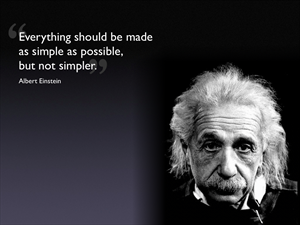Designing the Plan
(You Do Have a Plan, Don't You, Sweetcheeks?)
by Mike Starling
 So you’ve clarified your transportation strategy and it is consistent with the company’s strategic goals and objectives. Right? Okay, now it is time to review, revise, or recreate the design plan for how to move from ideas to action and implementation. The extent to which Alignment exists will determine where you commence your Design phase. If you had no existing transportation strategy, then obviously your design starts with the strategy layout and flows down to the tactical execution specifics to carry out the strategy.
So you’ve clarified your transportation strategy and it is consistent with the company’s strategic goals and objectives. Right? Okay, now it is time to review, revise, or recreate the design plan for how to move from ideas to action and implementation. The extent to which Alignment exists will determine where you commence your Design phase. If you had no existing transportation strategy, then obviously your design starts with the strategy layout and flows down to the tactical execution specifics to carry out the strategy.
Transportation Plan Design needs to be done at both Strategic and Tactical planning levels. Most people don’t have a strategic transportation plan. Most companies operate with a loose alignment of transportation tactics strung together under the umbrella headings of transportation, distribution, logistics, or supply chain operations. The “strategic” objective is to provide optimum service and minimize operating expense. These tactics may or may not be aligned with or related to the company’s strategic objectives in any way, and unbeknown to executive management, they may be working against strategic goal achievement and adding unnecessary operating expense.
What are the options for Design of your transportation strategic plan? Or your transportation tactical plan? What practical approaches can you take?
Well, you can "Do It Yourself" (DIY) or have someone "Do It For Me"(DIFM).
The first alternative, DIY, assumes you know what you are doing, and that you and the company’s executive management understand the benefit of establishing a clear transportation strategy and the benefit of alignment of such a strategy with company strategic goals and objectives. In addition, there is the reality check needed to honestly answer the question “Are Executive and Transportation Management capable of effective collaboration to achieve alignment of business and transportation strategy?” Without open and honest communication and receptiveness on both sides, such DIY initiatives are doomed to failure.
The second option, DIFM, is probably the most effective, expeditious, and efficient way to accomplish your plan design. This approach typically employs a collaborative coaching arrangement. Not only do you have the benefit of an experienced coach capable of viewing both parties as a “team,” but the added benefit of an unbiased resource capable of steering the process to completion, taking into account the collective needs of the individual participants, the company, and the reality of the marketplace in which you must operate.
In many cases neither business ownership nor functional management is well versed in plan design. A dedicated, experienced supply-chain coach in a collaborative coaching role will help to ensure clarity of purpose, inclusion of content, and completeness of design. Time is of the essence, to minimize disruption to the operations and mitigate unnecessary operating expense during the transition phase to full implementation.
Inspired individual forethought, combined with some humility on the part of both executive management and functional management, will help to ensure proper perspective in the development of a sound transportation strategy plan design… and so will the help of a good supply-chain coach!


